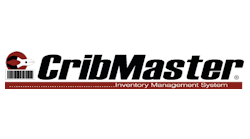Web-Hosted Software Tracks MRO and Reduces IT Burdens for British Airways Maintenance
Completion delays in aircraft maintenance are costly. Quick turnarounds and minimal aircraft downtime are critical components in cost reduction for any maintenance, repair, and overhaul (MRO) operation. The British Airways Maintenance facility at Cardiff (BAMC) takes pride in being a highly focused company that has become the benchmark for aircraft maintenance. According to Phil Morgan, Senior Team Leader for Inventory and Tooling, completion delays financially impact the business and create complications in fleet maintenance planning.
BAMC performs all the major maintenance on British Airways Longhaul Fleet of Boeing 747, 767, and 777 aircraft. Their engineers carry out modifications to both aircraft and cabins along with embodiment of Boeing modifications including some basic engine maintenance.
To perform the assigned maintenance tasks, BAMC inventories over 5,000 parts and over 1,000 various types of tooling some of which is vendor managed inventory (VMI). The VMI is stored at the BAMC facility and replenished by the vendor at agreed intervals.
BAMC has two centrally located tool cribs where inventory is stocked. The upper level crib stocks all the direct material or spare parts used on the aircraft, and the lower level stocks all the indirect material which is durables and consumables (gloves, abrasives, drill bits, washers, rivets, etc). Although the tool cribs are centrally located, there was still walk-and-wait time to get project materials at both levels of the tool crib. With the grab-and-go process and manual data entry to determine replenishment, they were often faced with inventory management challenges that had a direct impact on completion deadlines. Challenges such as:
- Inventory stock-outs
- Accountability issues
- Inefficient work flow processes
Seeking a cost-effective solution, the BAMC management team began to research various commercial software tooling programs. They discovered that by adding an additional software program to their SAP system, the cost would increase exponentially. According to Mr. Morgan, adding more software to their current system would have been considered an ancillary IT solution for them.
As part of a continuous improvement initiative, Buck and Hickman, one of BAMC’s valued-added supply chain partners, proposed a web-hosted inventory management software called CribMaster. The secure web-hosted methodology has many advantages including faster installations/implementations and reduced burden on IT personnel. The system also provides the database administration, on-going technical support, and upgrades with no expensive implementation fees.
BAMC made the decision to move forward with CribMaster in a three-phase implementation. They started with a manageable project first and grew the system from there. Phase one was the implementation of the Buck and Hickman VMI portfolio.
The system works like this. When a maintenance engineer requires material from the tool crib, a hand-held scanner is used to read three barcodes to collect data, first the employee ID badge, second the material being taken, and last the project or aircraft bay assignment. When the repair is completed, the returned material is scanned back into the tool crib. All the information is stored in real time. The CribMaster system accurately monitors usage, tracks consumption and budget, and automatically or manually issues purchase orders. Reports generated by the system provide historical data for managers to analyze product usage by person, team, maintenance bay, and aircraft.
Having experienced a positive impact in cost reduction from phase one, BAMC moved to phase two with the objective of achieving a complete workable supplier database with all their commercial suppliers through CribMaster. This allowed BAMC to optimize their supplier product portfolios. Just by optimizing their supplier database, they realized even greater benefits. Evidence as noted in these areas:
- Supplier database reduced from 150 to 53
- Less storage space for MRO inventory created more space for parts
- Consumption reduced by approximately 40%.
“CribMaster ensured us that the new broom always sweeps clean”, touts Mr. Morgan.
Phase three of the efficiency drive was to maximize the use of the system on as many areas of the crib as possible such as reworkable items, calibrations, kitting, etc. With kitting, items are packaged together in a kit, and then the kit is invoiced to the repair allowing them to track the items to a cost center.
After completion of three successful phases, where does BAMC see CribMaster going from here? The next phase would be to continue to improve the process flow by placing inventory dispensing machines at the point-of-use or locate machines in proximity of where the work is being done.
With the ability to accurately track inventory management data without added IT burdens means BAMC can efficiently plan what materials the maintenance engineers need in maintaining the aircraft fleet. Being a highly focused company, BAMC has made significant operational improvements to continually drive efficiency and reduce costs in the MRO process. Costly completion delays are prevented allowing aircraft to be delivered sooner.





